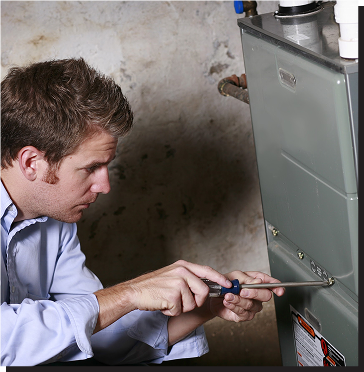One of the most common heating systems in North America is the furnace. It offers versatility in fuel options and comes in both standard and high-efficiency models. Understanding how your furnace moves air through your home can help you optimize comfort, efficiency, and the overall performance of your system.
The Air Cycle Loop
You can think of your furnace as part of a continuous air loop. It starts with cooler indoor air being pulled into the return ducts through vents and floor registers located throughout your home. That air passes through a filter before it reaches the internal components of your furnace.
The blower fan pushes the air across the heating components. In a gas furnace, the air flows over the heat exchanger, where it absorbs heat. In an electric furnace, the air moves across heating elements instead. Once warmed, the air travels into the supply plenum, through the ductwork, and back into your living spaces through supply vents. This loop repeats until your thermostat setting is reached.
Why Filter Placement Matters
Every furnace system should have a filter located before the blower and heating components. The filter removes airborne contaminants like dust and pet dander that would otherwise collect on internal parts. Without a filter, that buildup restricts airflow and makes your furnace run hotter than designed, which can shorten the life of components and reduce efficiency.
Modern furnaces are equipped with multiple safety features that prevent dangerous overheating, but a clogged or missing filter still puts stress on the system. A clean filter is one of the simplest ways to extend furnace lifespan, improve energy efficiency, and maintain better indoor air quality.
Optimizing Furnace Airflow
Maintaining proper airflow is critical to furnace efficiency. That doesn’t mean “as much airflow as possible”—your system is designed to work within a specific airflow range. Too little or too much air can reduce efficiency or even cause comfort issues.
To keep airflow balanced:
- Keep supply and return vents open and free from obstructions within a few feet.
- Check your furnace filter monthly, especially during peak heating season. Replace it according to manufacturer guidelines—often every 1 to 3 months—rather than relying on whether it “looks dirty.” Even filters that appear clean may already be restricting airflow.
- Choose a replacement filter of the correct size. If you want higher filtration for allergies or asthma, filters rated between MERV 11 and 13 can help—but only if your furnace is designed to handle them. Our technicians can advise you on the right filter type for your system.
It’s also important to schedule professional maintenance once a year, ideally in the fall. During this visit, a technician will clean internal components, check airflow, and ensure safety systems are working properly. Regular maintenance is not only good for performance, but it’s often a requirement to keep your manufacturer’s warranty valid.
The Role of Ductwork
Your ductwork plays a significant role in how efficiently your furnace operates. If ducts are old, poorly sealed, or leaking, some of the heated air will escape before reaching your living spaces. Energy losses from duct leaks can account for 20–30% of heating costs in some homes, especially if ducts run through attics or crawl spaces. Professional duct sealing helps ensure more of your furnace’s heat makes it where it’s needed, reducing waste and lowering your utility bills.
Expert Furnace Maintenance Service
KW Lang Mechanical offers expert furnace maintenance service for the Cleveland, OH area. We can also assist with all your furnace installation, replacement, and repair needs. Call our office today to schedule your next service appointment.





